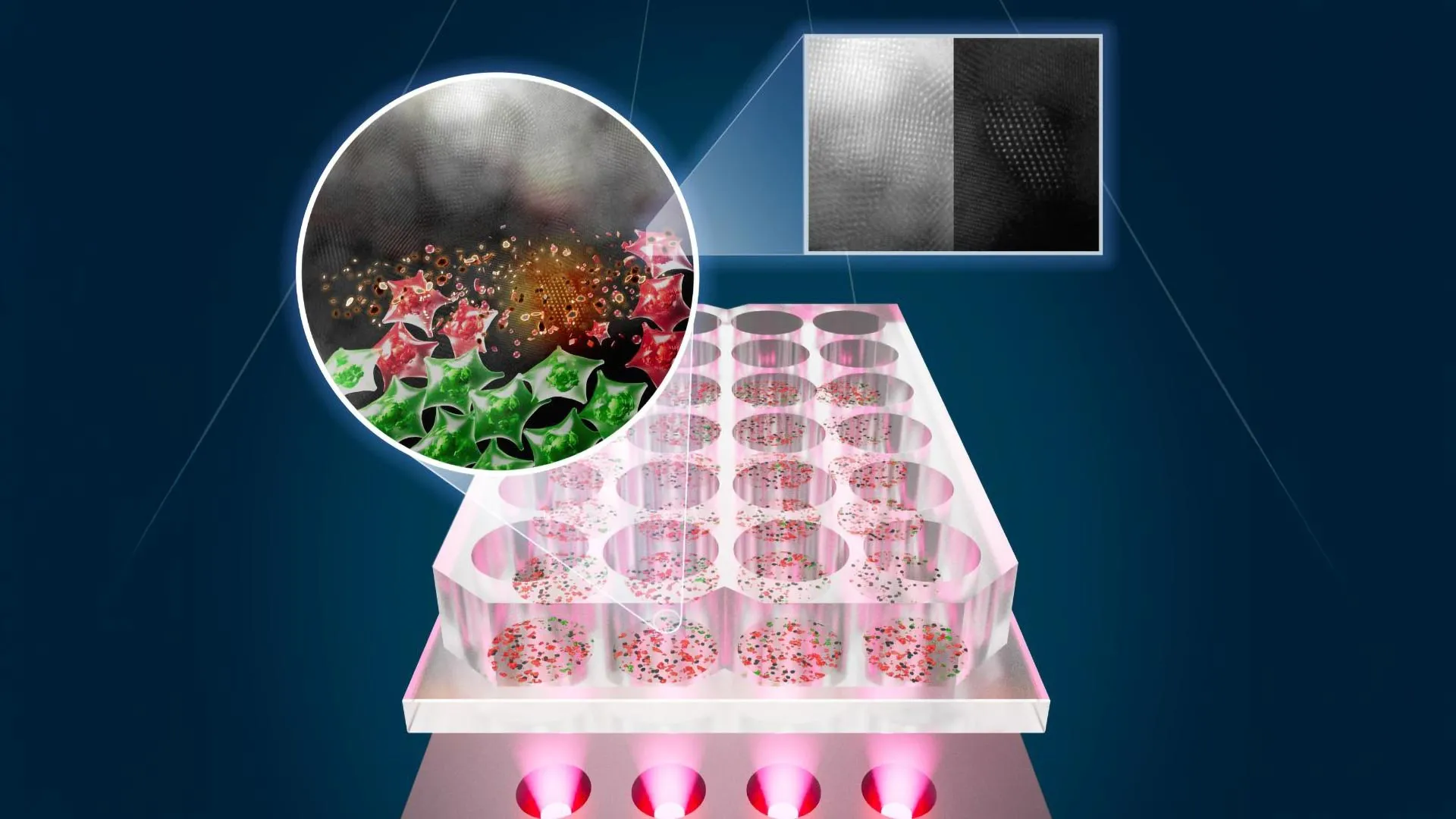Scientists have developed an exciting cancer therapy that uses LED light and ultra-thin tin flakes to kill cancer cells while protecting healthy tissue. Unlike traditional chemotherapy and other invasive treatments, this new method avoids the painful side effects that patients often endure.
The development was achieved through a partnership between the University of Texas at Austin and the University of Porto in Portugal, made possible by the UT Austin Portugal program. The goal of this collaboration is to make light-based cancer treatments more viable and affordable. Current versions of these treatments rely on expensive materials, specialized lab setups, and powerful lasers that can sometimes damage surrounding tissue. By switching to LEDs and introducing tin-based “Snox Nanoflex” (“SN” is the chemical symbol for tin), the researchers have created a safer and potentially lower-cost alternative.
LED Light and Nanoflex team up against cancer
“Our goal was to create a treatment that was not only effective but also safe and accessible,” said I, a professor in the Cockrell School of Engineering’s Chandra Family Department of Electrical and Computer Engineering and one of the project’s leaders. “With the combination of LED light and SNOX nanoflakes, we have developed a method to precisely target cancer cells while leaving healthy cells untouched.”
In a recent study published in ACS Nanothe approach proved highly effective against both colorectal and skin cancer cells. After only 30 minutes of exposure, the LED-powered treatment destroyed 92% of skin cancer cells and 50% of colorectal cancer cells, while leaving healthy human skin cells unharmed. The results highlight the efficacy and safety of the therapy.
A safe alternative to conventional cancer treatments
Cancer remains the second leading cause of death worldwide, and many current treatments come with serious side effects. Scientists around the world are looking for new ways to make treatments safer and more targeted. One of the most promising is near-infrared photothermal therapy, which uses light to heat and destroy cancer cells without the need for surgery or toxic drugs. This principle forms the basis of the UT Austin-Portugal team’s research.
After showing early preliminary results, the researchers are now focused on understanding how light and heat interact in the process and testing other materials that could enhance the treatment. They also plan to design practical medical devices that can deliver therapy directly to patients.
Bringing palliative care to patients
“Our ultimate goal is to be available to patients everywhere, especially in places where access to specialized equipment is limited,” said Artur Pinto, a researcher at the Faculty of Engineering at the University of Porto in Portugal and lead researcher on the project. “Specifically for skin cancer, we envision that one day, treatment could move from the hospital to the patient’s home. A portable device could be placed on the skin after surgery to immobilize and destroy remaining cancer cells, reducing the risk of recurrence.”
Ancorvia and Pinto first worked together through the UT Austin Portugal program in 2021. Since then, he has exchanged visits between Texas and Portugal and combined his expertise to discover how two-dimensional materials can be used to advance cancer treatment.
Expanding the research frontier
Building on their success, the team recently received additional funding through the UT Austin Portugal program to create an implant using a single LED and nanoflake technology for breast cancer patients. Their continued support may pave the way for more personalized, affordable, and pain-free cancer treatments in the near future.
Other co-authors of the article are: Ph.D. student Hui Ping Chang (Nanoflex LED development) and University of Texas at Austin undergraduate student Eva Nance; Filipa Als Silva (performed the biological characterization), Susana G. Santos (supervised the work) and Professor Ferno Magalhas (contributed to the funding of the Faculty of Engineering of the Faculty of Porto). and Jose R. Fernandez of the University of Trus os Montes and Alto Douro, who developed the LED system.
The UT Austin Portugal Program is a long-standing science and technology partnership between UT and the Portuguese Foundation of Science and Technology (FCT). Portugal has similar partnerships with two other American universities—Massachusetts Institute of Technology and Carnegie Mellon University—and its 17-year collaboration with UT was recently renewed for another five years.









